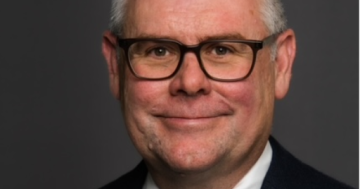
ABS figures show that for two quarters in a row, Australians have worked fewer hours. Photo: File.
Australians are starting to work fewer hours, a trend that statisticians say is not surprising in light of the ups and downs of the past few years.
The Australian Bureau of Statistics (ABS) has released hours-worked data for the December quarter and it shows a drop of 0.3 percent.
It is the second quarter in a row in which working hours have dropped.
The December 2023 quarter recorded 5863 million hours, which was 1.0 per cent below a high point in June.
For the September 2023 quarter, however, hours worked had declined by 0.7 per cent to 5879 million hours, the first time since 2021.
The ABS says the COVID pandemic has greatly influenced working hours.
ABS head of labour statistics Bjorn Jarvis suggested the trend was a result of irregular times.
“After a couple of years of strong growth, hours worked in December quarter 2023 were 1.0 per cent below the series high in June quarter 2023,” he said.
“Apart from early 2020, around the beginning of the COVID-19 pandemic, December quarter 2023 is the first time we’ve seen a fall in hours worked for two quarters in a row in about a decade – since March quarter 2014.
“However, it is also important to remember that the last couple of quarters were on the back of particularly strong growth in hours worked through the 2022-23 financial year, at 6.6 per cent.
“In annual terms, the December 2023 quarter was still 2.0 per cent higher than December quarter 2022.”
Hours worked fell in 10 out of 19 industries over the quarter, with the largest drops in information media and telecommunications (-10.6 per cent) and accommodation and food services (-8.7 per cent).
According to the latest ABS statistics, filled jobs rose by 0.4 per cent (57,000 jobs) in the December quarter, which was also slower than in recent quarters.
The annual increase of 2.8 per cent (428,000 jobs) was noticeably lower than the annual growth of 4.7 per cent (692,000 jobs) in March quarter 2023.
“The slower growth seen in filled jobs, together with the continued reduction in hours worked, suggests some moderation in the Australian labour market since the middle of 2023,” Mr Jarvis said.
“The multiple job-holding rate, which climbed to record highs during the pandemic, has also begun to stabilise, and has been between 6.6 and 6.7 per cent over the past year.
“While it hasn’t continued to increase, it is still around 0.8 percentage points higher than it was immediately before the pandemic.”
Job vacancies fell a further 5.6 per cent in December quarter 2023.
That has resulted in the proportion of total jobs that were vacant falling to 2.4 per cent, which is the lowest it has been since September quarter 2021.
“Five consecutive falls in both job vacancies and the proportion of vacant jobs shows an easing in demand for labour from the peaks we saw in September quarter 2022,” Mr Jarvis said.
“However, both measures are still well above their pre-pandemic levels, which suggests that the labour market continues to remain relatively tight despite these falls.”
Filled jobs grew in 11 out of 19 industries over the quarter, with professional, scientific and technical services (53,900) and health care and social assistance (38,500) showing the largest increases.
These rises were partially offset by a fall of 91,500 jobs (7.6 per cent) in accommodation and food services, according to the ABS.
Lower labour demand was seen across almost all industries in the December quarter, with the proportion of vacant jobs falling in 18 of a total of 19 industries, while 17 industries saw a fall in the number of job vacancies.
The largest fall in the proportion of vacant jobs was in the arts and recreation services industry, dropping 0.4 percentage points to 2.1 per cent.
This industry also had the largest quarterly change in job vacancies, falling 15.5 per cent. Despite these drops, the proportion of vacant jobs remained well above the 10-year average (1.6 per cent) for this industry.
The bureau’s Australian Labour Account complements other ABS measures to build a more comprehensive picture of the labour market.
Original Article published by Chris Johnson on Riotact.










